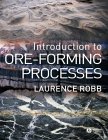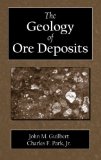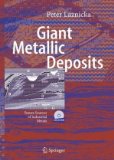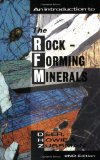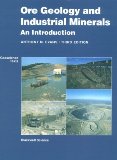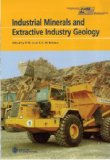Ore deposits
- 3D data integration for Exploration and Mine Planning

- 11th SGA Biennial Meeting- Antofagasta (Chile), September 26-29, 2011
- 40Ar/39Ar geochronology of magmatism and hydrothermal activity of the Madjarovo base-precious metal ore district, eastern Rhodopes, Bulgaria

- A field technique for rapid lithological discrimination and ore mineral identification: Results from Mamandur Polymetal Deposit, India

- A geological, geochemical and textural study of an LCT pegmatite: implications for the magmatic versus metasomatic origin of Nb-Ta mineralization in the Moose II pegmatite, Northwest Territories, Canada

- A look inside of diamond-forming media in deep subduction zones

- Advances in Geological Models and Exploration Methods for Copper ± Gold Porphyry Deposits

- Advances in Geophysical Exploration for Uranium Deposits in the Athabasca Basin

- Advances in Ni-Cu-PGE Sulphide Deposit Models and Implications for Exploration Technologies

- Age and tectonic setting of magmatic sulfide Cu-Ni mineralization in the Eastern Tianshan Orogenic Belt, Xinjiang, Central Asia

- Airborne Gravity Gradiometry in the Search for Mineral Deposits

- Alteration Mineralogy and Geochemistry of the Hydrothermally Altered Rocks of the Kutlular (Sürmene) Massive Sulfide Deposit, NE Turkey

- Boudinage, Ore Deposits, and Crustal Tectonics - A structural control on the location of ore deposits
- Characterization of Bedded Salt for Storage Caverns
- Comparative geochemical study of soils developed on characteristic black and yellow polymetallic massive sulfide deposits in Eastern Pontides (NE Turkey)

- Crustal History and Metallogenic Fertility: Terrane-scale Assessment with Detrital Zircons

- Diamond - and coesite-beraing chromitites from the Luobasa ophiolite, Tibet

- Draa Sfar, Morocco: A Visean (331 Ma) pyrrhotite-rich, polymetallic volcanogenic massive sulphide deposit in a Hercynian sediment-dominant terrane

- Empirical Models for Canadian Unconformity-associated Uranium Deposits

- European mineral statistics 2006-10 : a product of the World Mineral Statistics database

- Exploration 07 - 5th Decennial International Conference on Mineral Exploration (Toronto, Canada, September 9-12, 2007)
- Franklin and Sterling Hill, New Jersey - The World's Most Magnificent Mineral Deposits
- Future of the global minerals and metals sector : issues and challenges out to 2050

- Genesis and genetic types of karst bauxites

- Genesis of sedimentary- and vein-type magnesite deposits at Kop Mountain, NE Turkey

- Geochemical and Mineralogical Characteristics of Fe-Ni Laterite Ore of Sarıçimen (Çaldıran-Van) Area in Eastern Anatolia, Turkey

- Geochemistry of Skarn and Ore Formation in Dolomites

- Geological framework of the Volhyn copper fields with a review of the Volhyn Flood Basalt Province (western margin of the East-European Craton)

- Geology and evolution of pegmatite-hosted U-Th ± REE-Y-Nb Mineralization, Kulyk, Eagle, and Karin Lakes region, Wollaston Domain, northern Saskatchewan, Canada: examples of the dual role of extreme fractionation and hybridization processes

- Geology and Re-Os molybdenite geochronology of the Kurišková U-Mo deposit (Western Carpathians, Slovakia)

- Geology and wall rock alteration at the Hercynian Draa Sfar Zn-Pb-Cu massive sulphide deposit, Morocco

- Geology, mineralogy and the Pb, S isotope study of the Kalkım Pb-Zn ± Cu deposits, Biga Peninsula, NW Turkey

- Granite-related ore deposits: an introduction

- Hydrothermal ore deposits related to post-orogenic extensional magmatism and core complex formation: The Rhodope Massif of Bulgaria and Greece

- Hydrothermal uranium-base metal mineralization of the Jánská vein, Březové Hory, Příbram, Czech Republic: lead isotopes and chemical dating of uraninite

- Irish Association for Economic Geology
- Iron Ore 2013 - 12-14 August 2013, Perth, Australia
- Iron Oxide Copper-Gold Deposits: Geology, Space-Time Distribution, and Possible Modes of Origin

- Iulia (North Dobrogea, Romania): Lower Triassic iron ore of sedimentary-exhalative origin (Sedex)

- Key Role played by Regional Magnetic Surveys in the Discovery of Mineral Resources

- Kimberlite Pipe Models: Significance to Exploration

- Low-sulfidation epithermal Au-Ag mineralization in the Sındırgı District, Balıkesir Province, Turkey

- Metallogeny of Ophiolitic and other Mafic-Ultramafic Terranes in Alaska

- Maine Geology - Economic Geology Photo Gallery
- Mantle plumes, associated intraplate tectono-magmatic processes and ore systems

- Methods for Production of Metallogenic-Prognostic Map of Red Karst Bauxite in the Region of Nikšićka Župa, Montenegro (Europe)

- Mineral Exploration Services, Ltd.
- Mineral potential mapping : a new spatial decision support tool for industry and planners

- Mineralogy and geochemistry of banded iron formation and iron ores from eastern India with implications on their genesis

- Minerals From Macedonia. XX. Geological Setting, Lithologies, and Identification of the Minerals from Rzanovo Fe-Ni Deposit

- Miners Auctions - Buy and Sell Gold Prospecting Equipment on Miners Auctions, An eBay Alternative For Miners
- NRRI Economic Geology Group
- On the origin of strata-bound Zn-Pb ores in the Upper Silesia, Poland

- Ore Deposit Types and Their Primary Expressions

- Ore Deposits EXploration research group (ODEX)
- Ore Deposits Notes
- Ore deposits of the platinum-group elements

- Petrography and Geochemistry of the Jajarm Bauxite ore Deposit, Northeast Iran: Implications for Source Rock Material and Ore Genesis

- Platinum-group elements (PGE) and their principal carriers in metal-rich black shales: an overview with a new data from Mo-Ni-PGE black shales (Zunyi region, Guizhou Province, south China)

- Porphyry Copper System and the Precious Metal-Gold Potential

- Rapid Exsolution Behaviour in the Bornite-Digenite Series, and Implications for Natural Ore Assemblages

- Rare earth elements

- Recent Advances in BIF-related Iron Ore Models and Exploration Strategies

- Review of the Geophysical Technology for Ni-Cu-PGE deposits

- Seismic reflection profiling for massive sulfide exploration in Finland

- SIMS U-Pb zircon dating and Re-Os isotopic analysis of the Hulu Cu-Ni deposit, eastern Tianshan, Central Asian Orogenic Belt, and its geological significance

- Society for Geology Applied to Mineral Deposits (SGA)
- Some Quantitative Aspects of the Major Types of Ores at the Ržanovo Fe-Ni Lateritic Deposit, R. Macedonia

- Sphalerite Associated with Pyrrhotite-Chalcopyrite Ore Occurring in the Kotana Fe-Skarn Deposit (Giresun, NE Turkey): Exsolution or Replacement

- Stable isotope study of the mineralization and alteration in the Madjarovo Pb-Zn district, south-east Bulgaria

- Stratiform and vein-type deposits in the Pan-African Orogen in Central and Southern Africa: evidence for multiphase mineralisation

- Structural styles and economic potentials of some barite deposits in the Southern Benue Trough, Nigeria

- Supergene mineralization of the Medvědín uranium deposit, Krkonoše Mountains, Czech Republic

- Supergene minerals in the Horní Slavkov uranium ore district, Czech Republic

- Supergene uranium mineralization from Horní Halže near Mědenec (Krušné hory Mountains), Czech Republic

- Synthesis of skeletal diamonds: implication to orogenic belts microdiamond formation

- Three-dimensional subsurface modeling of mineralization: a case study from the Handeresi (Çanakkale, NW Turkey) Pb-Zn-Cu deposit

- Ultra-rapid exhumation of ultrahigh pressure diamond-bearing metasedimentary rocks of the Kokchetav Massif

- World mineral production 2006-10

- World mineral production 2007-11

Books about ore deposits
